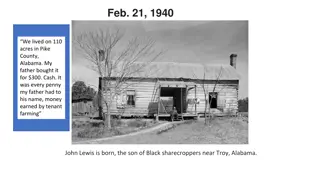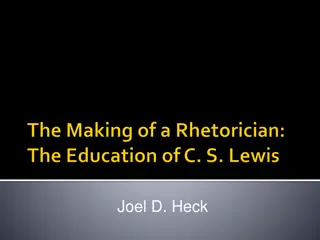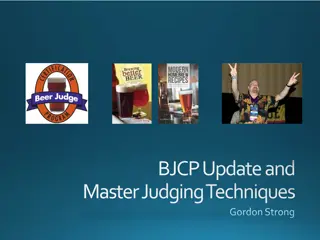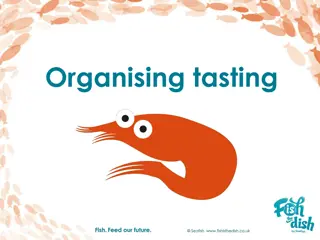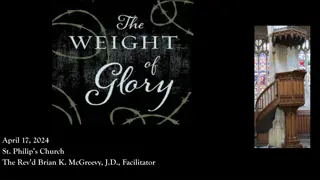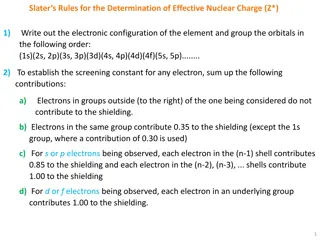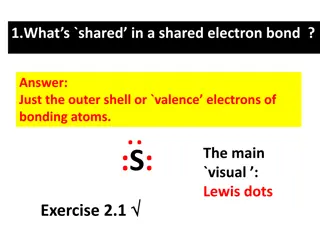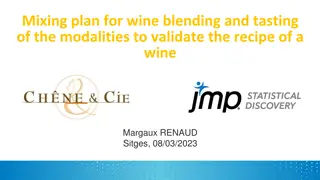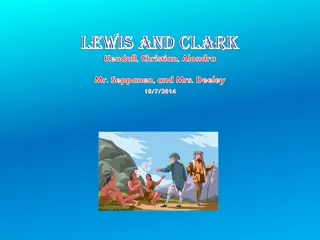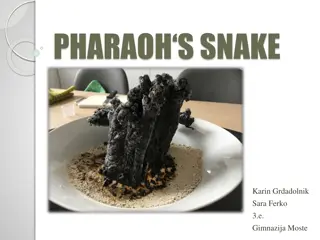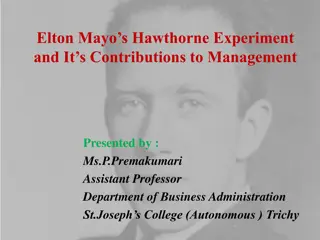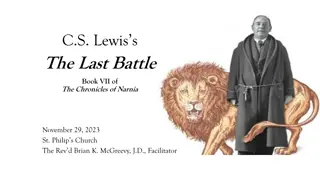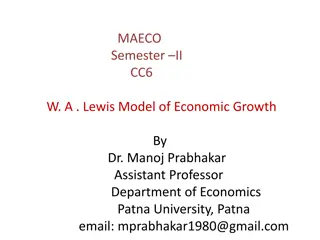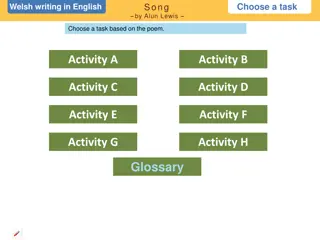
French Palates and Wine Perception Study
Explore the influence of wine price on enjoyment and willingness to pay, based on a study comparing intrinsic and extrinsic wine characteristics. Previous research highlights the subjective nature of wine appreciation and the impact of price on perceived quality. Understand the relationship between wine attributes, enjoyment, and consumer behavior.
Download Presentation

Please find below an Image/Link to download the presentation.
The content on the website is provided AS IS for your information and personal use only. It may not be sold, licensed, or shared on other websites without obtaining consent from the author. If you encounter any issues during the download, it is possible that the publisher has removed the file from their server.
You are allowed to download the files provided on this website for personal or commercial use, subject to the condition that they are used lawfully. All files are the property of their respective owners.
The content on the website is provided AS IS for your information and personal use only. It may not be sold, licensed, or shared on other websites without obtaining consent from the author.
E N D
Presentation Transcript
Do the French have superior palates but no better sense of value? An experimental study Geoffrey Lewis Professorial Fellow, Melbourne Business School g.lewis@mbs.edu Beno t Lecat Professor, Burgundy School of Business benoit.lecat@escdijon.eu Tatiana Zalan Associate Professor, Torrens University Australia tatiana.zalan@tua.edu.au
Purpose and background This study is an extension of our earlier work in an Australian setting aimed at exploring the way the price of wine (an objective characteristic) influences willingness to pay (WTP) and appreciation (Lewis & Zalan, JWE, 2014). Manipulation similar to Plassman et al. (2008). The key conclusions from that study were that for non-expert wine drinkers: there is no relationship between intrinsic wine character and enjoyment (individuals rated the same wines quite differently); price influences both appreciation of wine and WTP, but the latter more strongly. Replicate the study in a different setting with more experienced wine drinkers. 3
Previous studies Relationships between price and wine characteristics: Hedonic pricing studies aimed at determining which characteristics of wine have an impact on price [Unwin, 1999; Lecocq &Visser, 2006] Wine quality can be divided into two components: Intrinsic / sensory characteristics (taste, smell, colour, etc.) Extrinsic / objective characteristics (vintage, packaging, brand, reputation, etc.) Price is significantly affected by objective characteristics, [Oczkowsky, 1994; 2001; Ashenfelter et al., 1995; Schamel and Anderson, 2001]; sensory characteristics have little or no effect [Lecocq and Visser, 2006]. Enjoyment / subjective appreciation of wine and knowledge of wine: Non-expert wine drinkers have trouble distinguishing between good and bad wines [Weil, 2001; 2005] Even experts (Masters of Wine) disagree on wine quality [Robertson] This is unsurprising, given that Appreciation is extremely subjective palates vary greatly, and the human sense of taste and smell is relatively impoverished (cf. sense of sight and sound) [Todd, 2010]. 4
Previous studies (continued) Relationship between Price and Enjoyment: Plassmann et al. (2008) study of 20 human subjects using fMRI scans and a price manipulation (two wines were administered twice with different Price cues - one high and one low) Increasing the Price of wine increases subjective reports of flavour pleasantness and the neural computations of the experienced utility (EU) made by the brain. This is consistent with the idea that because perceptions of Quality are positively correlated with Price [Rao & Monroe, 1989], the individual believes that a more expensive wine will taste better. Goldstein et al. (2008) large-scale study, where participants were unaware of Price Individuals who are unaware of the wine prices, do not derive more enjoyment from more expensive wines. Non-experts enjoy more expensive wines slightly less. Relationship between Enjoyment and Willingness to Pay: Yang, McCluskey and Ross (2009) evaluate how sensory qualities of wine, such as astringency, bitterness, aroma and flavor, affect consumer s WTP using contingent valuation (CV) method. 5
Business Strategy approach to key factors determining buyer behaviour WTP the max. price the buyer is willing to pay before switching to a substitute product or forgoing the purchase Consumer Surplus is what determines buyer behaviour Consumer surplus Unique added value Price A strategic variable that a firm uses to divide added value into Consumer Surplus and Producer Surplus Producer surplus (profit) Cost The full economic cost (opportunity cost) A firm creates a competitive advantage by choosing a strategic position where it can drive a wedge between WTP and Cost, both relative to competitors: Competitive Advantage = Relative WTP Relative Cost Competitive advantage is transaction-specific specific buyers under particular given circumstances of time and place. Sources: Porter (1996, 2008); Ghemawat and Rivkin (2006); Brandenburger & Stuart (1998); Collis (2011); Postrel (2003) 6
Research Design - Protocol The study was conducted at The School of Wine & Spirit Business (Groupe ESC Dijon Bougogne) in 2014 with two experimental groups: 1. English-language program students in the Master of Wine Business and Master of Wine Management programs (n=31), and 2. Students in the French-language program CIVS (Commerce International des Vins et Spiritueux), the leading post-graduate wine business program in France (n=27) The wine tasting protocol was slightly different from the Australian study: the students were knowledgeable about wine (WSET Level 2 and above) the price manipulation was modified and protocol refined the WSET tasting procedure was adopted the manipulation was strengthened by relabelling bottles so that as participants poured the wine they could fully engage with the objective characteristics. 7
Research Design - Structure The experiment was structured in two rounds: Round 1 - Can you identify the Village Appellation? The participants were asked to identify the Village appellation of three red Burgundies, indicating their Rating (scale 1-6) and WTP. This round was conducted to get participants used to the process and to make them less likely to suspect experimental manipulation. Round 2 - TheBurgundy Appellation Challenge The participants were presented with five red Burgundy wines from the same producer and vintage and were asked to assess the classification (ranging from Grand Cru to Bourgogne Regional Appellation) of the wines. The question was posed whether some classifications were over/under- rated or over/under-priced and how they valued these wines based on quality, regardless of the classification. They were again asked to rate the wines (on a scale of 1-6) and indicate their WTP. 8
Round 1 Differences between the two groups of tasters Number of wines correct None correct One correct Three correct Group 1 English Language Students (n=31) Group 2 French Language Students (n=27) 38.7% 19.4% 41.9% 11.1% 40.7% 48.1% 9
Round 2 Presented and True Prices Wine Presented Price (on the tasting sheet) True Price (Estate price) 1 48 Grand Cru 48 Grand Cru 2 31 Premier Cru 8 Regional Appellation 3 31 Premier Cru 31 Premier Cru 4 20 Village Appellation 48 Grand Cru 5 8 Regional Appellation 8 Regional Appellation We anchored Wines 1, 3 and 5, and manipulated the price of Wines 2 and 4, unlike the Australian experiment, where we anchored Wines 2, 3 and 4, and manipulated the price of Wines 1 and 5. 10
Group 1: (English Language Program) Results (n=31) True Price Presented Price WTP Rating 60.00 6.00 50.00 5.00 Euros per bottle 40.00 4.00 Rating (1-6) 30.00 3.00 20.00 2.00 10.00 1.00 0.00 0.00 1 2 3 4 5 Wines 11
Group 2: (French Language Program) Results (n=27) True Price Presented Price WTP Rating 60.00 6.00 50.00 5.00 40.00 4.00 Euros per bottle Rating (1 - 6) 30.00 3.00 20.00 2.00 10.00 1.00 0.00 0.00 1 2 3 4 5 Wines 12
Interesting findings Group 2 (French language students) To the French students, the Village Cru (Wine 4) tasted much better than they expected, and they rated it more highly than the same wine when it was presented as a Grand Cru (Wine 1) (see Brochet, 2001). They demonstrated keener palates and more confidence in assessing the wines regardless of objective characteristics: their ratings more accurately reflected the Classifications of the wines. 13
Round 2 Differences between the two groups of tasters (Ratings) Difference in rating of same wines Difference between WTP and True Price Group 1 English Language Students 1.77 Group 2 French Language Students 0.37 14
Interesting findings Group 2 (French language students) And yet in spite of what their palates told them, the objective characteristics (label and Presented Price) overwhelmed their judgement regarding WTP despite their higher rating, they were only willing to pay 24.26 for the Village Cru, compared with 36.19 for same wine when presented as Grand Cru 15
Round 2 Differences between the two groups of tasters (WTP) Difference in rating of same wines Difference between WTP and True Price Group 1 English Language Students 1.77 45.45 Group 2 French Language Students 35.15 0.37 16
Conclusions Even for knowledgeable wine drinkers, WTP is strongly influenced by objective cues, such as classification, price and labelling. While this is consistent with our earlier experiment using a non- expert group, this study suggests objective characteristic may have less influence on Appreciation for more knowledgeable wine drinkers. For the French students the manipulation with one of the wines did not override their palates, but it did seem to override the way they valued the wine (WTP). Was this the result of a combination of the effect of objective characteristics, intrinsic wine quality, and expectations? 17

